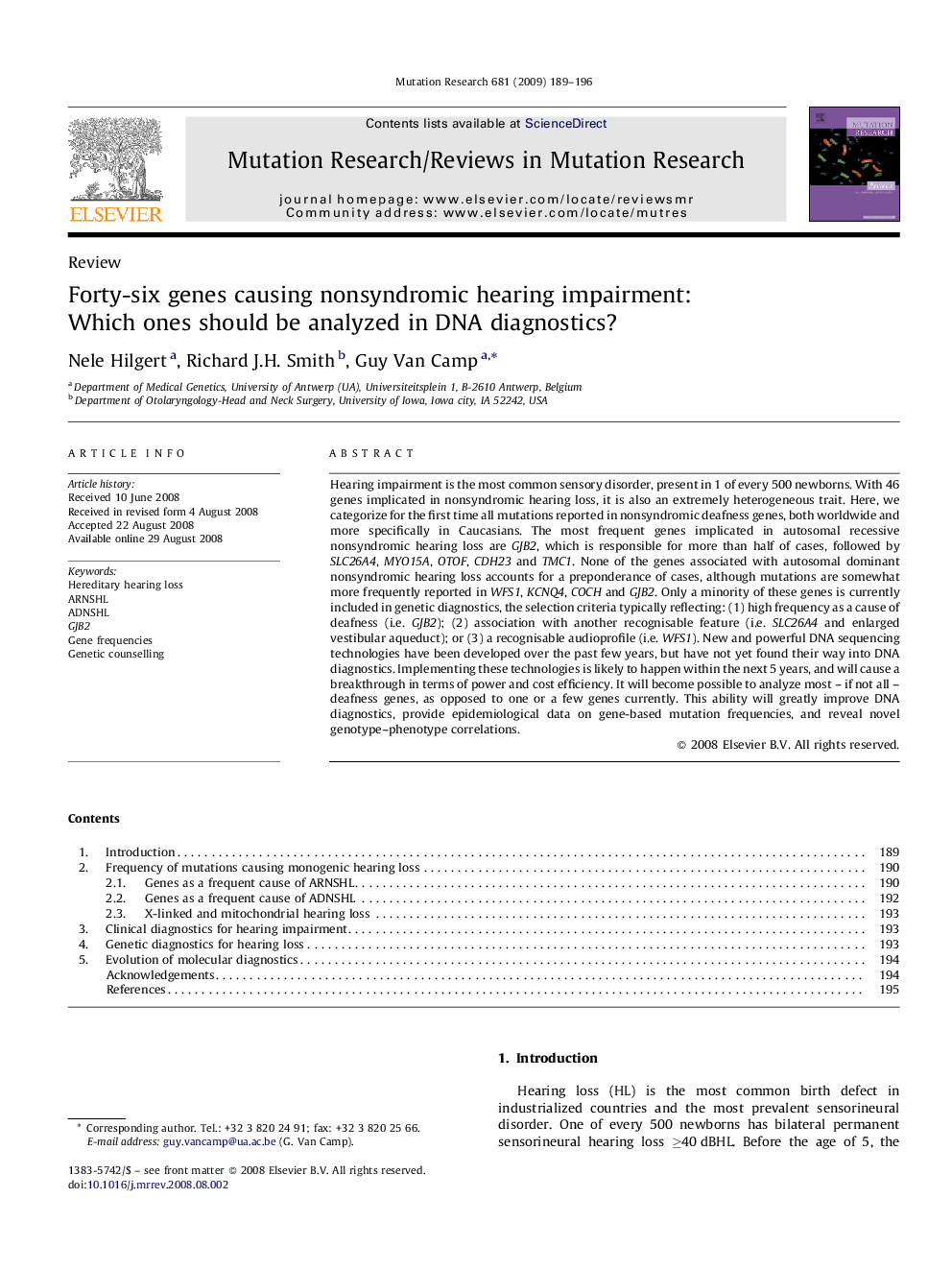| کد مقاله | کد نشریه | سال انتشار | مقاله انگلیسی | نسخه تمام متن |
|---|---|---|---|---|
| 2149708 | 1548760 | 2009 | 8 صفحه PDF | دانلود رایگان |

Hearing impairment is the most common sensory disorder, present in 1 of every 500 newborns. With 46 genes implicated in nonsyndromic hearing loss, it is also an extremely heterogeneous trait. Here, we categorize for the first time all mutations reported in nonsyndromic deafness genes, both worldwide and more specifically in Caucasians. The most frequent genes implicated in autosomal recessive nonsyndromic hearing loss are GJB2, which is responsible for more than half of cases, followed by SLC26A4, MYO15A, OTOF, CDH23 and TMC1. None of the genes associated with autosomal dominant nonsyndromic hearing loss accounts for a preponderance of cases, although mutations are somewhat more frequently reported in WFS1, KCNQ4, COCH and GJB2. Only a minority of these genes is currently included in genetic diagnostics, the selection criteria typically reflecting: (1) high frequency as a cause of deafness (i.e. GJB2); (2) association with another recognisable feature (i.e. SLC26A4 and enlarged vestibular aqueduct); or (3) a recognisable audioprofile (i.e. WFS1). New and powerful DNA sequencing technologies have been developed over the past few years, but have not yet found their way into DNA diagnostics. Implementing these technologies is likely to happen within the next 5 years, and will cause a breakthrough in terms of power and cost efficiency. It will become possible to analyze most – if not all – deafness genes, as opposed to one or a few genes currently. This ability will greatly improve DNA diagnostics, provide epidemiological data on gene-based mutation frequencies, and reveal novel genotype–phenotype correlations.
Journal: Mutation Research/Reviews in Mutation Research - Volume 681, Issues 2–3, March–June 2009, Pages 189–196